Exclusive Interview with Eng. Rumen Kanev (CEO and Chief Engineer DETECH LTD)
I’m really proud to have the honour to hereby publish my exclusive interview with Eng. Rumen Kanev, CEO and Chief Engineer of DETECH LTD, the worldwide famous Bulgarian producer of some of the most powerful search coils and metal detectors on the market. After testing their latest VLF detector, named WINNER, that really impressed myself (see my review HERE) I’ve asked Eng. Kanev (RK in the text) to manage and interview and he kindly accepted. Before we go, I’d like to send my big thank you to Eng. Rumen Kanev for his kindness and to making himself available to my questions and also to his staff for their great work and for the nice pictures. I won’t let you wait anymore… Here’s the complete transcription…
Leonardo/”Bodhi3”
Director AMDTT
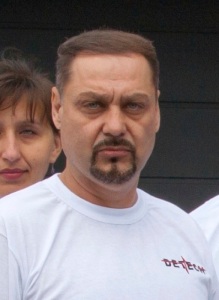
LC: Can you tell us something about your previous background and when did you started to get interested in metal detecting technology development?
RK: I have graduated Mathematics Secondary School in my birth town Shumen (Bulgary) . And then – higher education in the Technical University of Russe, mechanical engineer speciality. After that, I’ve just registered a company and started to import metal detectors, basically from Kellyco, USA. I have always tried to ensure the optimal for the certain customer detector, complied with the possibilities of the treasure hunter and the aim, which has made him buy a detector. These years gave me really excellent acquaintance with a big part of the detectors on the market then. On the other hand – the contacts with thousands of TH-ers gave me a full picture of all the possible requirements, remarks of the customers, to the existing metal detecting products. And you know, the main requirement of every metal detectorists is the greater depth of penetration of the detector. And from there the designs of bigger sized coils for different detectors and of the PI detectors began. And till now, the company has already five patents in the field of metal detection.
LC: Detech probably became known to the public for the Excelerator coils but maybe you became world wide famous for your powerful SEF “Butterfly” coils. Can you tell us about their history? Where did you get the inspiration for those wonderful “DoubleZero” coils?

RK: We started with products, very similar as a design, to the DD coils of Minelab detectors. This because those coils were the best on the market for that moment. Trying to make even better products, we kept all their positive qualities, improving them and adding new qualities. Our first coils were made with composite materials, fibre glasses, entirely hand made. Such a technology is good for quick make of prototypes and short series of coils. The housings made in this way are very strong, temperature resistant and could be made in different colours and textures. But a big disadvantage is the deformation of the housing with the time, bringing to change of the coil’s balance – which is the biggest negative for a coil. That is why we turned to other technologies – vacuum thermoforming and injection molding. They allow mass scale production.
In our strive to improve the current models, to avoid the tendency of disbalancing, and to improve the pinpoint, and also for the stable operation of the coil, we came to the SEF coils shape. Adding four spokes, and using new epoxy resins with great strengthness and a low specific weight – the result was the so popular “Butterfly” searchcoil shape, which everyone tries to imitate now.
LC: What do you think it’s the most critical issue of coils? Shape, size, fine tuning, solidity etc? Will we see some new special shaped models?
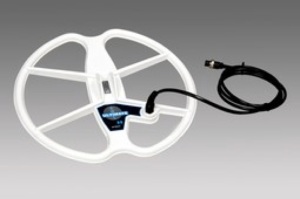
RK: All the issues you’ve mentioned are of equal importance for the good searchcoil. It is the most significant part of the metal detector, and no compromises should be done with the solidity, fine tuning, the materials. The shape has big significance, and the size depends on the customer’s choice. The smaller sized coils are good for search of small targets, gold nuggets, and for trashy areas. The bigger sized coils are useful for relic hunting. We have new, designed already searchcoils, with interesting shapes, but let them be secret until their release for mass production (Note from LC: Can’t wait to test them!!!).
LC: Will Detech produce special Minelab CTX3030 and XP DEUS compatible coils?
RK: For the moment enquiries for design of searchcoils for these detectors are extremely rare. XP and also Minelab have accessory coils for these detectors. Though that, if the interest in other accessory coils increases, we could design such coils, of course, with the assistance of Minelab and XP detectors.
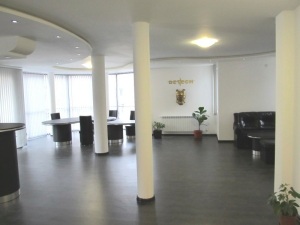
LC: After coils manufacturing, you’ve also entered in the metal detectors’ market with your PI series and the VLF/IB EDS and Winner models. They are becoming very popular more and more everyday. Can you tell us more about their creation? What makes the EDS and the Winner so incredibly powerful for depth, reactivity and ground exclusion balance?
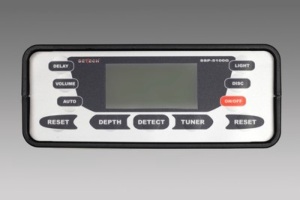
RK: We are the first company which improves the PI detectors adding to them AUTO MODE, in which the detector tracks the changes in the ground, without the necessity of manual resetting. A big disadvantage of the previously existing PI detectors (before we introduced our models) was the lack of any kind of true discrimination. Detech was the first to to build a PI detector magnetic-inductive sensors, which register when signal from the target is ferromagnetic. We have patents for this feature. We also were the first company to release a PI detector with a display and graphical representation of the signal.
Regarding our VLF detectors: Their good performance is due to:
– very careful choice of electronic scheme
– selection of very high quality electronic components
– last but not least – precise factory handmade tuning.
LC: Will you produce a multi-frequency VLF/IB model?
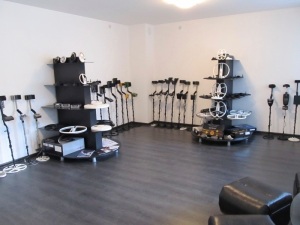
RK: Yes, we are working on such a project, but would not engage ourselves with somewhat without finishing the project with confidence in its success.
LC: What about submersible units? Are you planning to make one waterproof unit?

RK: We do not intend to design submersible unit. On the market there are too many good models, the Excalibur (Note by LC: made by Minelab) is just wonderful, and we could recommend it to everyone interested in underwater detectors.
LC: Do you think that current technology like VLF and Pulse Induction are actually reaching their theoretical limits? Do you think there’s some more to be done on that before switching to a different technology?
RK: Yes, we really think that the VLF and PI detectors are designed at almost their technological maximum. It is almost impossible to exceed our sensitivity and depth of penetration. Even the biggest brands are somehow quite stuck on their top performance level since many years. The new models of detectors, recently released on the market, are lightenned, with bigger screens, colour displays, with more features (many of them unnecessary).
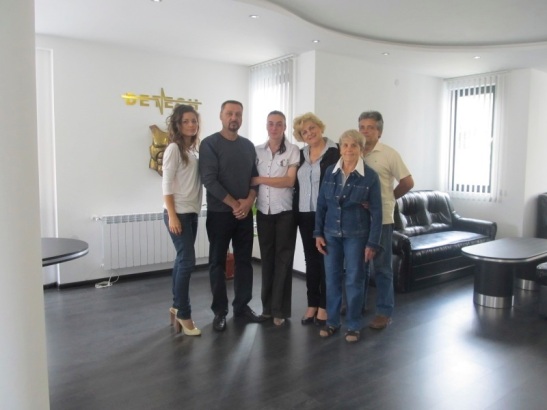
The woman at Rumen’s left is his wife, Nina, the executive of the company, responsible for almost everything in the company.
Next to Nina is Kalina, a sister of Rumen Kanev – the cheaf accountant of the company.
And next to Kalina is Elena, the mother of Rumen – she is responsible for all the properties of the company.
The last one is Georgi – the contact person of the company, who is also involved in the correspondence of the company.
LC: Most top-of-the-line detectors from major brands are totally CPU controlled with digital (color) displays, DSP, wireless headphones and communications etc. Will Detech come out with a detector with all these features or you’ll keep producing more “traditional” machines like you’ve done until now?
RK: At the moment we are preparing such a detector model. It will be with big display, lots of features, wireless headphones, etc… And we hope it will be reality very soon. (Note by LC: Hope we could also test it too as soon as possible!)
LC: In your opinion, will we ever see an “Open Source” detector where the internal software could be enhanced and uploaded by users, as it happens with Android smartphones?
RK: We have commented this with our specialists, and their opinion is that our future detectors will be equipped with such a higher class of processor, which will allow the interface to be enhanced and uploaded by users.
LC: Will hybrid machines Metal Detector/Ground Penetrating Radar, that are now used in military demining, enter the hobbyist market? Are you working on that too?
RK: We do not have enough experience in this field. But we think that the GPR won’t enter the hobbyist market on a mass scale. First of all they are very expensive, and require quite a lot of practical experience from the operator, so that he could correctly read the data from the radar. These are too professional systems, and the hobby would be somehow lost….

LC: What are Detech’s immediate plans? What we should expect from you in the near future?
RK: Only a month ago we released new series of searchcoils – WSS (Wide Scan). We are preparing also new searchcoils models and also new, more modern detectors. We hope to bring joy to the hobbyists with these new products.
LC: Thank you very much Eng. Kanev! It was such a pleasure to host you on our blog! I’m sure our readers will be very excited from your statements!
RK: You’re welcome Leonardo! I send my greetings to all the AMDTT’s blog audience and I wish all of you will enjoy our present and future products.

very nice interview, great things to be expected.
grtz Dirk (Belgium)
Thanks a lot my friend!
good interview..Detech produce really good coils..